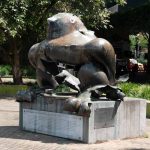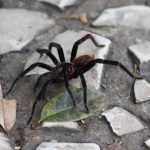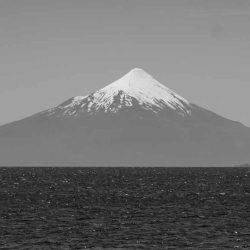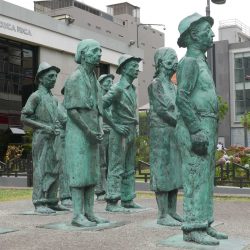Colombia is truly something different. It’s a massive country, with highlights spread out all over the place. It has some true gems, with Caribbean beaches, Andean mountains, Amazon rainforests and the incredible Choco region. It’s also still in parts a difficult place to travel, despite an ever improving security situation.
CONTENTS
General introduction
They are lively, loud, friendly. A bit macho as well. They are very curious. Colombians are a passionate bunch, with a lot of ‘sangre caliente’, warm blood.
The two biggest cities, capital Bogota and Medellin, are both located in the hills. They are bustling, Latin urban jungles. Bogota has amazing museums, but still something of a safety problem. Medellin is warmer, has more art and a better infrastructure. Climate-wise it is the best place I ever visited.
From this core of the nation onwards the roads are long. The Pacific coast is hard to reach because of lack of infrastructure, and is partly still controlled by paramilitaries. Besides Buenaventura and Nuqui, it’s not an easy place to visit.
The Caribbean coast has its own queen, Cartagena with its walled city. The further away from the city you go, the better the beaches, especially at Guajira and its surrounding desert.
There are too many colonial places to mention. But Villa de Leyva and Barichara are amongst the more popular ones. Relatively close to Medellin you can find Jardin and Jerico, or halfway to Cali there are Salento and Filandia.
When you venture south, Cali is the focal point. But there are many more things to explore in this massive region, from colonial Popayan and the tombs of Tierradentro to the Tatacoa desert. (see a possible list of itineraries for Colombia)
Highlights
- Bogota: the capital has some of the best museums of the country. The Museo de Oro is even world-famous for its gold collection. The complex of the Banco de la Republica collection comprises several museums, amongst them the Museo Botero. This artist left his legacy to Bogota and Medellin. North of Bogota is the Catedral de Sal, the cathedral of salt, a complex of mines worth a visit
- Medellin: its history ridden by violence, this city is cleaning up its act fast. Neighborhoods such as Poblado, Laureles and Envigado are swanky and can compete with any American or European city. The public transport is a fascinating mix of trains, trams, buses and cable cars, one even taking you to the Parque Arvi nature park far above the city. For contemporary art Medellin is a great place as well, with the MAMM and the Museo Antioquia (with lots of Botero works). The main asset of Medellin though are its lively people, filling the streets and cafes and enjoying the eternal spring here
- The rock of Guatape: popular daytrip two hours by buy from Medellin, this natural wonder is a steep rock that you can climb for some wonderful views of the region, the artificial lake around the village of Guatape
- Cartagena: the queen of the Caribbean, though Baranquilla (where Shakira is from) being the party capital. Cartagena is famous for its walled city, which attracts masses of tourists. It is also a city of extreme wealth inequality, even worse than in other parts of hyper-corrupt Colombia
- Capurgana: off the beaten track, this place can only be reached by small plane and/or a speedboat. This is a different world, close to the Panama border, with a Caribbean vibe in the jungle. It is the northern part of the Choco region, a beautiful mountainous stretch from Panama to Ecuador on the western side
- Villa de Leyva: probably the most famous colonial town in Colombia, 2-3 hours driving north of Bogota. Its central square is something different, a massive quadrant of cobblestones. Touristy in the weekends, a haven of peace during the week
- Barichara: smaller, more remote and more expensive than Villa de Leyva, this is truly a picture-perfect colonial town
- Desierto Tatacoa: this desert protected by the highlands is a unique place. Especially the red desert is incredible. It’s smaller than you think, but also a unique experience as you can walk in between these maybe ten-metre high red desert hills
- Rio Claro canyon: it’s hard to get closer to nature. In between Medellin and Bogota is this natural reserve, where you can do some hiking, swimming, ziplining or explore caves. Some of the rooms have no windows, just a mosquito net: you wake up with the sounds and views of the jungle
- Cali: the capital of salsa doesn’t really cater for tourists. It’s a bustling, authentic place though, where people foremost like to party. It is an urban jungle, but with a couple of old colonial barrios that belong to the best of Colombia. Great art scene as well
- Popayan: south of Cali, another colonial town, known for its white-walled houses
- Tierradentro: between Popoyan and Neiva is this huge archaeological site, which makes for a great day of hiking
- there is only so much you can do in two months. So some more suggestions:
- Jardin and Jerico: apparently similar to Barichara, but then a couple of hours south of Medellin (an article about Jardin)
- Laguna Verde: if you go even further south of Popoyan, towards the Ecuadorian border in Rumichaca, you end up in Pasto. The Laguna Verde is a mountain lake worth a one-day hike, there are other places in and around Pasto as well, for example the beautiful Laguna Cocha
- Ciudad Perdida: a five-day hike to the lost city, this is apparently similar to the famous Machhu Picchu trail. Located in the north
- Parque Nacional Tayrona: also in the north is this massive national park
- El Cocuy: one of the most remote and highest mountain ranges of Colombia, a twelve-hour bus ride from Bogota. But you might be rewarded with stunning views at around 5’000 metres height
- Laguna Guatavita: not too far from Bogota, this lake reminded me a bit of the Quilotoa volcanic lake in Ecuador when I saw pictures. Directions here
- Cano Cristales: further to the southeast, the rivers here get a red hue during a part of the year and have thus become a major tourist attraction
- Zona Cafetera: Colombia is known for its coffee. It’s especially good at marketing, and the Zona Cafetera is an example of that. A collection of villages dedicated to the art of cultivating coffee beans
Food and drinks
The Colombian cuisine is too rich to mention everything here. Specialties are the arepas (dry, thick corn tortillas) and several empanadas. Especially the arepas al huevo (with boiled egg) are delicious.
Aguardiente are the shots you will drink when you get drunk and celebrate with the locals. Rum is everywhere as well. And it’s delicious and goes far beyond the regular Bacardi you will find in Europe.
Getting there and getting around
Most tourists will come by air. Cartagena, Cali, Medellin and Bogota all have airports with direct flights to America and Europe. There are few land borders: the Rumichaca one with Ecuador in the south is the safest option.
Within the country you can fly as well when in a hurry, as distances are huge. Some areas (like Capurgana) can even only be reached by air or boat.
The most common way though are long-distance buses. They vary greatly in quality and comfort, but never go fast. Calculate with 30-50 kilometres per hour and you will understand why the ‘highway’ between Medellin and Bogota already takes eight hours. A good source for which buses drive when is www.pinbus.com but it doesn’t list all the connections available.
Miscellaneous
- Weather: again highly dependent on the region. The Caribbean coast is almost alway sunny and warm, only in the last months of the year you might get proper rain. The mountainous regions have moderate climates, with rain all year around as well which explains why Colombia is so green. Check the climate charts for the local regions though, because the weather can vary wildly
- Safety: after the peace treaty with the FARC guerillas in 2017, and the decline of the big drug cartels, Colombia has become a safer place. Big cities though can still be problematic in some areas, so don’t flash your valuables or even better: don’t carry them with you. Colombia is one of the most inequal and corrupt countries in the world, and these two facts are connected. Most of the tourist destinations are safe, but the peace is still brittle. And there are regions that are controlled by paramilitaries that are basically no-go-zones. Check the travel advice of your Foreign Ministry for current status
- Gay travel: Bogota and Medellin have become pretty liberal and have gay scenes. The default attitude of a lot of Colombians is still macho though, so be careful with open displays of affection
- money: in Colombian pesos. In smaller villages there might not be an ATM and you might need to pay everything in cash at the same time
- more pictures of Colombia can be found here






















